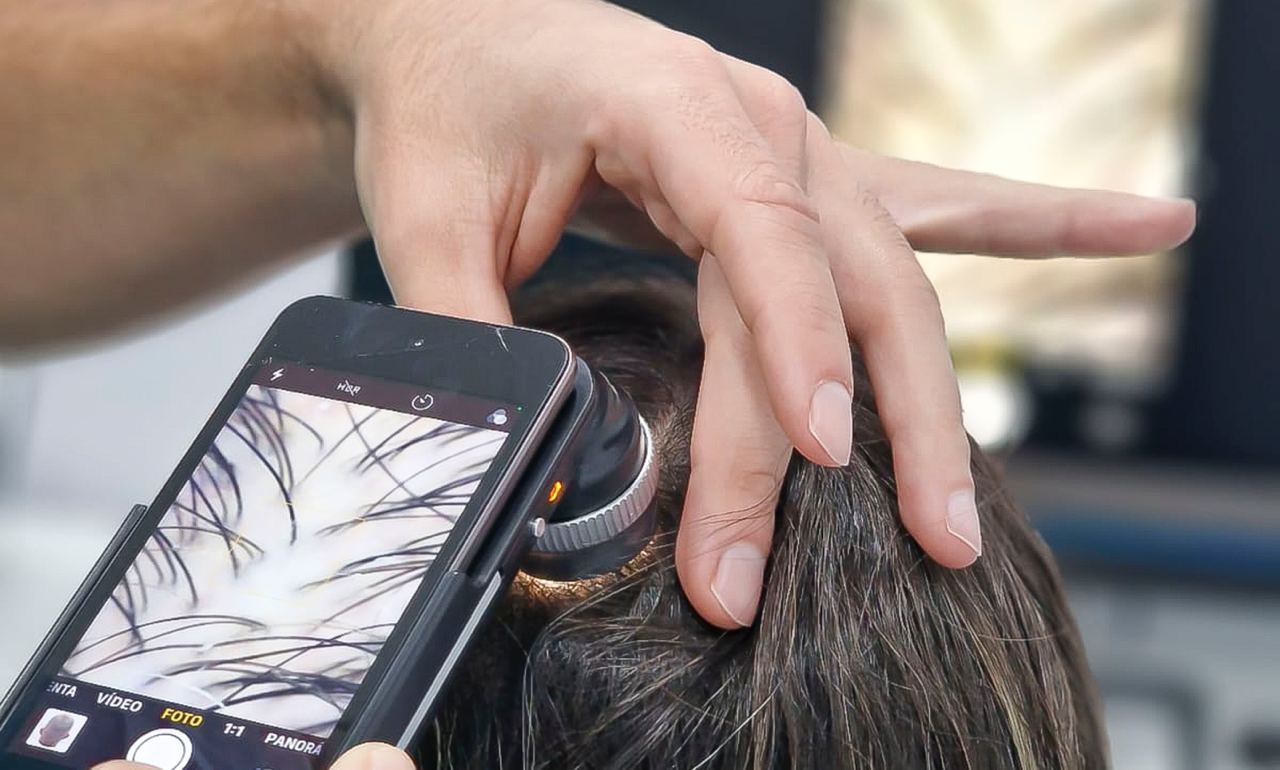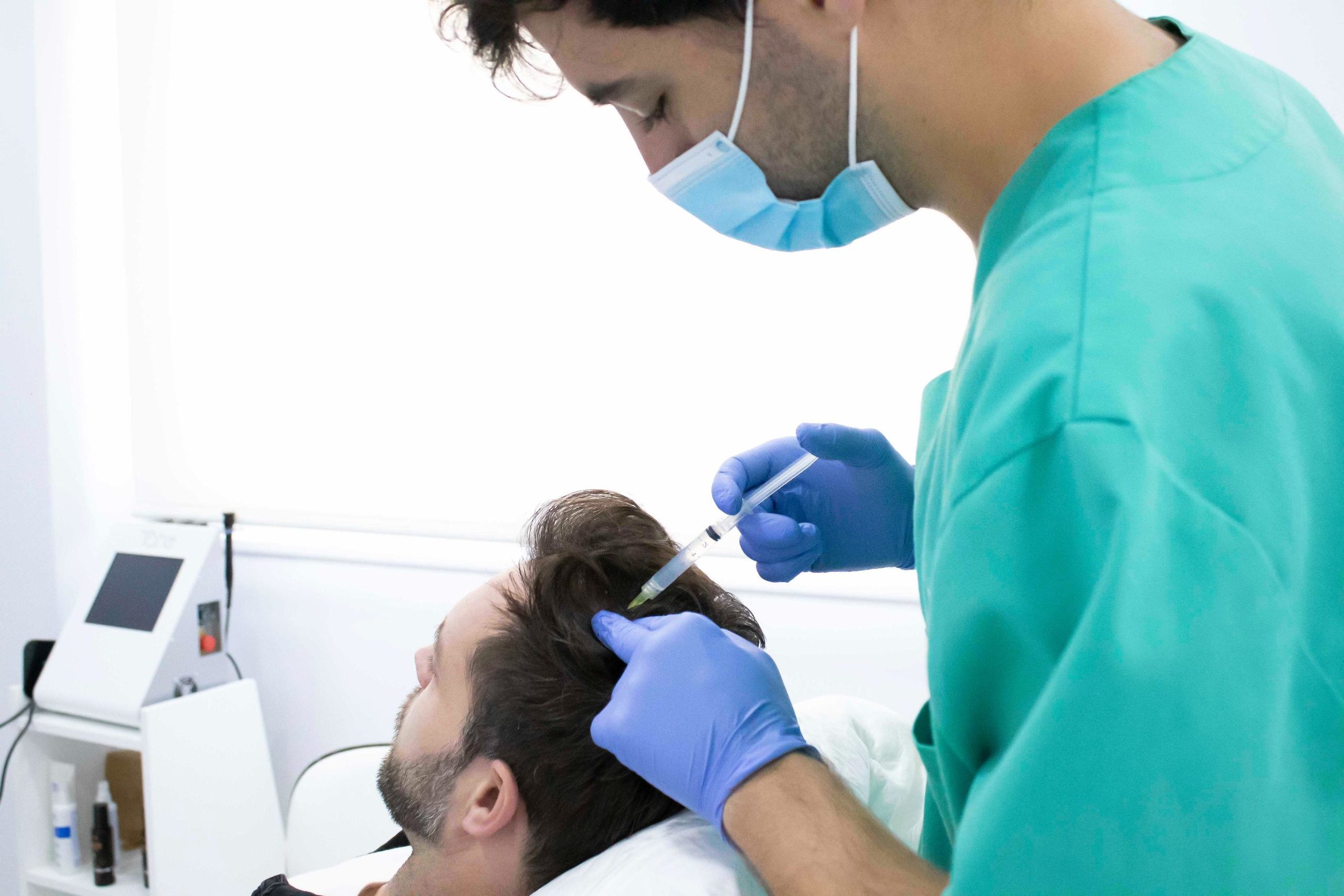
Irreversible hair loss affects a high percentage of people in our country, both men and women, and this is indicated by the rate of alopecia in Spain. Currently there are several methods that can be used to stop hair loss, even to restore hair that stopped growing naturally. In these cases, knowing what is alopecia and the types that exist It is essential to know when to go to a specialized hair clinic and, thus, be able to remedy it.
En Hospital Capilar We are experts in medicine and hair surgeries. We perform capillary diagnoses daily and we treat cases of men and women with alopecia. In our blog We tell you what alopecia is, what are the causes of its development and the treatments that currently exist to reduce its effects.
Alopecia, also known as baldness, is defined as the unusual hair loss leading to bald patches.
In our scalp there are thousands of Hair follicles. It is in these follicles that the hair is found. When the hair that falls does not grow back due to alopecia, not only the hair is lost, but the follicle is detached. When there is no longer follicular activity, the hair will not grow back naturally, causing baldness.
We should not confuse it with a routine hair loss, since we must bear in mind that, naturally, we lose approximately 100 hairs a day. This is due to its own hair life cycle and it occurs when the hair enters your telogen phase. In these cases, the hair grows back since the follicular unit is maintained, unlike a loss due to some type of hair pathology where the hair that has fallen does not grow back naturally.
It is key to know what are the causes that can cause this pathology mainly to apply the most appropriate treatment in each case. The development of alopecia can occur for different reasons and, consequently, there are different types of alopecia. To know the origin of hair loss, it is essential to consult a professional to receive a medical assessment.
A hormonal disturbance It is the most common factor in the development of alopecia, and this is indicated by our medical equipment. Specifically, it is the cause of the androgenic alopecia, which is the most common of all. It is a type of alopecia that affects men to a greater extent, but it also occurs in women.
Specifically, this alteration occurs in male hormones or androgens. When the levels of Dihydrotestosterone rise, has a direct impact on the hair follicles causing their weakening and subsequent fall. It is this hormonal imbalance in the person that causes baldness.
Genetics also has a strong link in the development of this pathology. In case of having a direct history with hair problems of this type, there are greater chances of ending up suffering from alopecia.
A hormonal alteration and genetics are not the only causes of hair loss. Other factors such as stress, the change of season or a poor diet can cause hair loss, called in these cases telogen effluvium. However, hair loss is reversible and hair will grow back in most cases.
Also considered as an external factor we find the excess of tight hairstyles and/or extensions. These are the main cause of what is known as traction alopecia, which mainly affects women.

When talking about what alopecia is, it is essential to mention the types that exist since not all of them are the same and, therefore, they are not treated in the same way. Depending on the origin and the type of fall in question, we will be facing one type or another.
Next we tell you the types of alopecia more common in both men and women.
Androgenic alopecia, as we have mentioned before, has its origin in Dihydrotestosterone, although genetic factors are also involved.
Although this type occurs in both men and women of, there are different ways to measure the degree of it. In the case of women, use is made of the Ludwig Scale, while to measure the stage in which the male patient is, it is required the Hamilton–Norwood scale.
Hair loss when the patient presents androgenic alopecia usually begins at the entrances and crown. As progress progresses, the hair loss spreads throughout the scalp. The hair that falls will not come out again, so it is essential to put a solution to it before the first signs of baldness to avoid a greater visual impact.
La alopecia areata es of autoimmune origin, that is, it is the person's own immune system that attacks the hair follicles, causing them to fall. The hair falls irregularly, that is, without an order, usually in the form of rounded patches around the head.
It is a type of alopecia that, although to a lesser extent than androgenic, also affects many men and women.
Diffuse alopecia begins with hair miniaturization until the weakening is such that it ends up falling off. This hair loss is usually temporary, since usually with medical treatments the hair is recovered.
An excess of tight hairstyles or the continued use of extensions can lead to what is known as traction alopecia. The tension generated causes the hair to weaken and end up falling out. It is usually accompanied by a feeling of tightness in the head and even itchy skin.
Telogen effluvium refers to temporary and reversible hair loss caused by different factors. Hair loss due to covid19a seasonal fall or when high levels of Stress telogen effluvium occurs.
As we mentioned, the effects are reversible and once the factor causing telogen effluvium is overcome, the hair will grow again.
Alopecia must be understood as a chronic disease that, to this day, does not have a cure as such, but rather highly effective treatments to stabilize it and stop hair loss. Depending on the type of alopecia being treated, the medical team recommends one treatment or another. For this, a prior medical assessment is important.
Currently there are drugs such as Finasteride or Minoxidil with which it is possible to stop hair loss due to androgenic alopecia. As for alopecia of autoimmune origin, other types of drugs are used to stabilize it.
Hair mesotherapy is one of the key treatments to stop hair loss. It consists of applying a cocktail of vitamins and drugs adapted to the patient subdermally on the scalp. This treatment replaces in most cases the consumption of oral drugs.
Platelet Rich Plasma, or PRP, is a capillary regeneration treatment that consists of extracting blood from the patient and subjecting it to a centrifugation process. In this way, plasma enriched with growth factors is obtained, which is applied by microinjections into the scalp. Thus, it is possible to stop the fall and promote hair growth.
The FUE hair graft is currently the only method by which it is possible to recover hair that has fallen due to alopecia. The previously mentioned hair treatments stabilize alopecia and stop hair loss, but in no case will they make hair grow again in areas where it has stopped growing naturally.
It is a minimally invasive outpatient surgical process that offers natural results. It consists of extracting healthy hair follicles from the donor area to subsequently implant them in the area affected by alopecia.

Currently, alopecia does have a solution. In Hospital Capilar We are experts in hair grafting with the FUE technique, in addition to having medical hair treatments to stop hair loss. Do you want more information? Request more information and make your diagnosis at no cost.
Sanitary Reg. No. Pontevedra: C-36-003121 Sanitary Reg. No. Madrid: C517593 Sanitary Reg. No. Murcia: 30800014


Copyright © 2021 - Legal Notice and Privacy Policy - Cookies policy